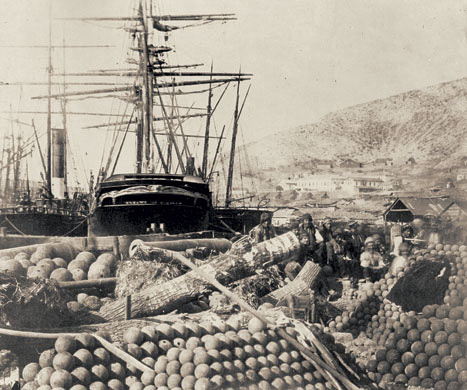Wet Plate Photography 1851
While recognizing the advantages of the negative - positive process, but dissatisfied with the coarse quality of images printed through paper, numerous experiments searched for a transparent medium. Many tried the obvious, glass, but experienced difficulty in bonding the emulsion to the surface. In 1848, however, Abel Nie`pce de Saint Victor succeeded by using albumen as a coating on glass. Although his process produced a storable, dry plate, a great convenience, the required exposures were excessively long and the process never became popular.
Nevertheless, experimentation continued and in 1851, Frederick Scott Archer succeeded in bonding a photographic emulsion to glass. The process employed collodion, a viscous solution of guncotton dissolved in alcohol and ether, as the transparent bonding agent. The sensitized plate had to be exposed and processed before the highly volatile collodion could dry, for when dry, it formed a shield impervious to the developing and fixing solutions. Because it was used in this fashion, the process became known as collodion wet plate photography.


The collodion wet plate process was unbelievably awkward. Imagine toting with you on even the most casual photographic outing a portable darkroom such as a light-tight tent, a supply of 8x10 ( or larger ) glass plates, photosensitive and processing chemicals in their various containers, and a bulky wooden camera tripod. Then imagine setting up a tent, coating each glass plate with a photographic emulsion, loading the plate while still wet into a plate holder and then into the camera, immediately making an exposure, and rushing back into the tent to process the plate before it could dry; then repeating the process for each exposure!


Despite these inconveniences, the collodion wet plate rapidly superseded the daguerreotype in popularity. The materials were less costly. Exposure times were usually less than a minute, and often were as short as ten seconds. Unlike the daguerreotype, which was a single, unreproducible image, the glass collodion wet plate produced a negative from which unlimited prints could be made. The final prints, on paper, were lightweight and flexible. And, happily, the rendering of exquisitely fine detail, uncompromised by printing through paper, was comparable to that of the daguerreotype. Collodion wet plate photography began a wave of popular photography, enticed thousands of new amateurs to the craft, dominated photographic practice worldwide for nearly thirty years, and established the negative-positive process as the standard for photography thereafter.


Two variations of the collodion wet plate, which simulated the appearance of the daguerreotype, also became popular. One, the Ambrotype, patented by James Ambrose Cutting, used underexposure or bleaching to produce a faint negative image on glass. When viewed against a deep black background, the positive image would be seen. A Union Case was used to bind the glass plate permanently with, usually, a piece of deep black velvet. Another variation was the Tintype, introduced in 1856 by Hamilton L. Smith. In this case, the wet collodion emulsion was applied to a metal plate, usually tin, that was lacquered deep black. A faint image was produced on the surface, and when the plate was viewed against the black background, the positive image would be seen. Because Ambrotypes and Tintypes were inexpensive and easy to make, they became very popular in America and supported a virtual army of studio and itinerant photographers. However, these one-of-a-kind techniques would eventually go the way of the daguerreotype, superseded by the more flexible negative-positive process.
If you missed the first History on Photography posts Click Hear to read about the History of photography from the beginning. Or you can Click Here and read the next post in the series!